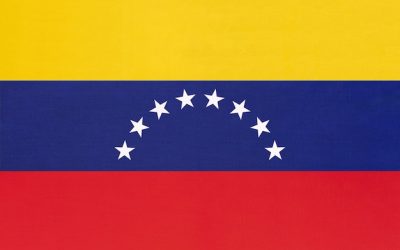The International Monetary Fund (IMF) issued a global central bank digital currency (CBDC) on April 10, 2023. Dubbed as Universal Monetary Unit (UMU), it attempts to create a public digital currency system for the 11,000 banks of the SWIFT system.
The Bank of Canada (BoC)—which released a contingency plan for a CBDC in 2020—has refrained from launching it soon, but stablecoin UMU could accelerate its issuance. A Canadian CBDC, however, would serve nothing else than surveillance purposes.
In its contingency plan, the BoC stated the CBDC design would enable “compliance with regulations that require disclosure of information.” The design would not include cash-like anonymity, since the BoC believes “such a CBDC would be extensively used in illicit activity and would not respect anti-money laundering regulations.”
Despite the unhurried CBDC development, BoC governor Tiff Macklem said in December 2022 that the bank will conduct a public consultation on the topic this year. “We want to know: what are Canadians’ interests in a digital currency, what are their expectations, what sort of elements would be important to them,” Macklem explained.
The final decision on issuing a CBDC, and when, is in the hands of the Parliament.
The global trend, however, is rising. According to the Atlantic Council’s tracker, 11 countries have fully launched their CBDCs so far. China is expanding its pilot project this year, and another 114 are exploring them. Only 35 nations were considering a CBDC in May 2020.
A CBDC Is Needless
As long as people continue using and demanding cash, the BoC would issue bank notes. The preference for digital money, however, is growing fast.
With 83 percent of its adult population owning a credit card, Canada is one of the largest cashless societies. According to debit and credit card processor Moneris, cash purchases will only make up 10 percent of the money spent in Canada by 2030.
The COVID-19 pandemic accelerated the adoption of mobile and contactless payments by Canadians of all ages. The same happened with other digital financial services and forms of money, such as cryptocurrencies and stablecoins.
According to the BoC, 13 percent of residents owned crypto assets, especially bitcoin, in 2021, up from 5 percent in 2020. While private, pseudo-anonymous bitcoin leads adoption, the BoC reported more people were also holding stablecoins (cryptocurrencies whose value is pegged, or tied, to that of another currency, commodity, or financial instrument) to counter price volatility.
Canadians are spontaneously transitioning from physical to digital, and the figures show that people’s needs and habits are shaping market innovations. A retail CBDC would, therefore, be just another form of digital money available in Canada.
Cons Outweigh Pros
With mobile and contactless payments, Canadians already enjoy the alleged advantages of a CBDC: lower costs, more efficiency, and easier access to financial services. Hence, the drawbacks associated with a CBDC would outweigh the purpose.
A CBDC can enable an aggressive monetary policy, reduce competitiveness in the banking sector, and further surveillance of financial transactions. While the first two imply more government intervention, privacy breaches are the top concern.
The CBDC contingency plan acknowledges that “Canadians are concerned about maintaining an appropriate degree of privacy both in relation to private businesses, such as merchants and payment providers, and in relation to the government.” Moreover, according to a 2020-21 survey conducted by the Office of the Privacy Commissioner of Canada, 87 percent of citizens worry about how new technologies affect their privacy.
Without giving more details, the contingency plan mentions that the degree of privacy would rely on regulators’ discretion and other financial regulations. “How much privacy should be available, and from whom, is an important public policy issue,” the BoC asserts.
The CBDC will include a digital ID system, but the federal government has poorly managed digital ID before. From 2018 to 2022, it launched the Known Traveller Digital Identity (KTDI) program, together with the World Economic Forum.
According to the Justice Centre for Constitutional Freedoms (JCCF), KTDI worked as a tracking and profiling program. KTDI collected unnecessary personal data from travellers, such as the biology and behaviours of users. Since one of the KTDI goals was encouraging COVID-19 vaccination, the program exposed travellers to a social-credit system that would hamper the unvaccinated with restrictions to public spaces and discrimination.
The Government Should Delegate The Task
Digital money users can choose whether they prefer a more private and anonymous means of online payments among the wide variety of private-sector alternatives. However, the state must not get involved if market solutions are already emerging and satisfying people’s needs.
As argued by the JCCF, the government should not have tracking and profiling capabilities because these can jeopardize citizens’ fundamental rights and liberties. In contrast, regulators should support the creation of robust privacy-protection laws and promote the development of technological innovations that prioritize privacy and autonomy.
Further, rather than focusing on designing a CBDC, officials should ensure the country has the infrastructure and connectivity to enable that all citizens have access to digital finances. They should also establish a regulatory framework that favors innovation and stability among financial service providers while protecting customer privacy.
Paz Gomez is a Research Associate with the Frontier Centre for Public Policy.



